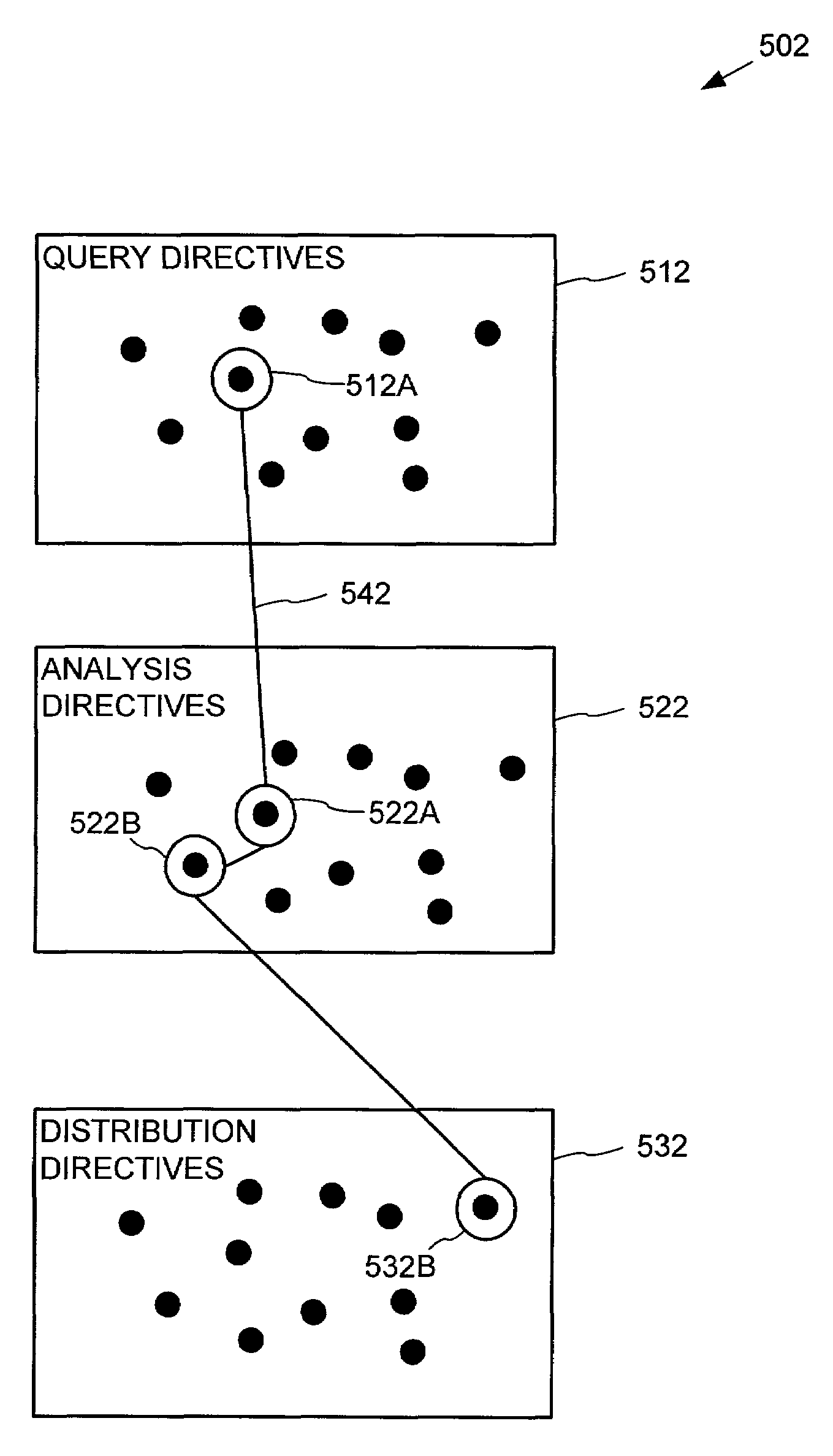Systems and methods for refining a decision-making process via executable sequences
a decision-making process and executable sequence technology, applied in the field of querying, analyzing and distributing information, can solve problems such as original assumptions being wrong and needing to be adjusted
- Summary
- Abstract
- Description
- Claims
- Application Information
AI Technical Summary
Benefits of technology
Problems solved by technology
Method used
Image
Examples
example 1
A Query-Analyze-Distribute Approach
[0072]An exemplary implementation of the processing shown in FIGS. 1 and 2 is a query-analyze-distribute approach. For example, FIG. 3 shows such an approach 302. In the example, a data collection 312 includes a set of databases, including a database 322.
[0073]A query cycle 332 engages in one or more queries to produce information derived from the data collection 312. Then, an analysis cycle 342 subjects the information from the query cycle to one or more analyses. Then, the distribution cycle 352 distributes information from the analysis cycle to one or more destinations. The distribution cycle 352 typically also includes processing related to formatting the information so it is of proper format when it reaches its destination.
[0074]The query-analyze-distribute approach can help an organization better divide the tasks of extracting, processing, and routing information. The various technologies described herein can be combined to provide a rich env...
example 2
Providing Access to Interim Processing Results
[0075]FIG. 4 shows an exemplary arrangement 402 for providing access to interim results (e.g., interim results of processing 122 of FIG. 1). In the example, a data collection 412 is subject to processing 422, resulting in output, which may be in the form of a document 428.
[0076]Some of the functions 434, 444, and 454 may be of a form that accepts configurable inputs, such as 432 and 452. The configurable inputs 432 and 452 can take the form, for example, of parameters stored and appropriately associated with the functions 434, 444, and 454.
[0077]In the example, the recipient of the document 428 may be provided with access to the interim results, functions, and inputs of processing 422. For example, a list of the various results, functions, and inputs can be presented upon request. Or, as shown in the example, a reference 482 can be included in the document 428, which serves as a link 484 to interim processing (e.g., result 446).
[0078]The...
example 3
Sequences
[0081]To facilitate processing, the various executable processing directives can be associated together into a sequence. Various operations can then be performed on the sequence, such as execution, scheduling, modification and sharing.
[0082]An exemplary arrangement 502 showing sequences is shown in FIG. 5. In the example, an environment stores a set of executable query directives 512, a set of executable analysis directives 522, and a set of executable distribution directives 532. The executable processing directives shown can be associated together into a sequence 542. In such an arrangement, when the sequence is executed, the query directive 512A is processed. The results of the query 512A are then provided to the analysis directive 522A, and the results of the analysis directive 522A are then provided to the analysis directive 522B. Finally, the results of the analysis directive 522B are provided to the distribution directive 532B.
[0083]Another type of executable process...
PUM
 Login to View More
Login to View More Abstract
Description
Claims
Application Information
 Login to View More
Login to View More - R&D
- Intellectual Property
- Life Sciences
- Materials
- Tech Scout
- Unparalleled Data Quality
- Higher Quality Content
- 60% Fewer Hallucinations
Browse by: Latest US Patents, China's latest patents, Technical Efficacy Thesaurus, Application Domain, Technology Topic, Popular Technical Reports.
© 2025 PatSnap. All rights reserved.Legal|Privacy policy|Modern Slavery Act Transparency Statement|Sitemap|About US| Contact US: help@patsnap.com



